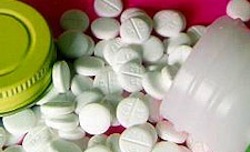 Classification: Sympathomimetic stimulant
Classification: Sympathomimetic stimulant
Common Names/Nicknames: Ephedra, herbal ecstasy
Active Compound: Ephedrine
Found in: Synthetic ephedrine, plants of the Ephedra family, ephedrine tea
Mode of Consumption: Ingestion, injection
DEA Scheduling/Legal Status (in US): Schedule IV, legal with restrictions (only for bronchodilatory uses)
Effects:
Bronchodilation, increased energy, restlessness, anorexia, mania, hallucinations
Risks:
Acute: Increased heart rate, hypertension, hyperthermia, dehydration, accidental injury, seizures, cardiac arrest, stroke, coma, fatal overdose
Chronic: addiction, tolerance, withdrawal, depression, infertility, heart damage
Insufflation: nasal septum damage. Inhalation (smoking): lung damage.
Dangerous Drug Combinations:
Potentially fatal combination with other stimulants, depressants/sedatives, and seizure medications. Potentially dangerous mix with acetaminophen/paracetamol (Brand names: Tylenol, Triaminic, Panadol) and medications with risk of seizure.
Special Considerations:
Found increasingly in conjunction with methylenedioxypyrovalerone.
And remember, if somebody may need help, play it safe and call for medical assistance.
“Students may bring an intoxicated or drug-impaired friend to University Health Services or to a hospital, or seek assistance from College residential life staff or HUPD, and by doing this, neither they nor the friend will face disciplinary action from the College for having used or provided alcohol or drugs.”
The Amnesty Policy
Harvard College Student Handbook
Sources:
Buzzed: The Straight Facts About the Most Used and Abused Drugs from Alcohol to Ecstasy (Third Edition), by Cynthia Kuhn, Scott Swartzwelder, and Wilkie Wilson. Published 2008 by W. W. Norton & Company.
National Institute on Drug Abuse (NIDA), part of the National Institute of Health (NIH) of the U.S. Department of Health and Human Services.
http://www.nida.nih.gov/DrugPages/
U.S. Drug Enforcement Agency (DEA), part of the U.S. Department of Justice.
Erowid Organization

